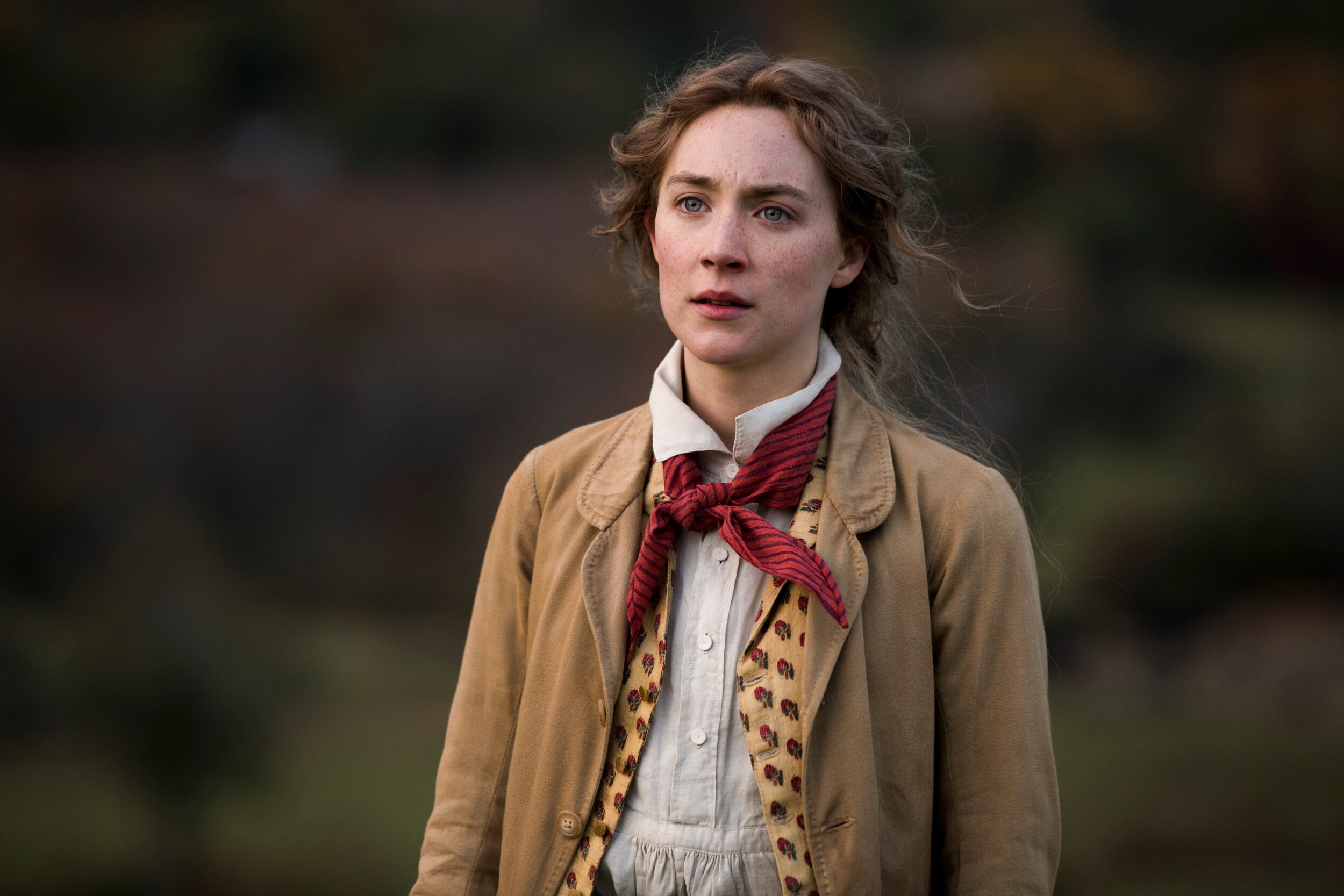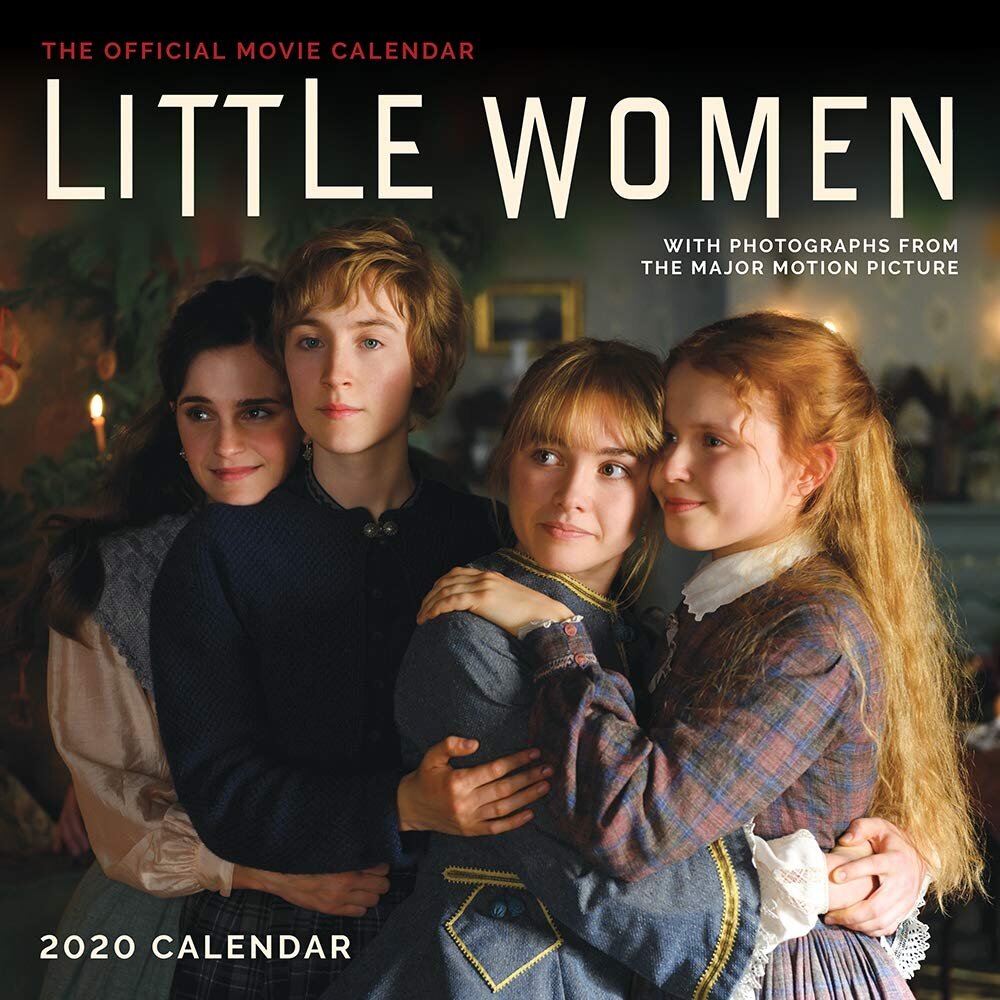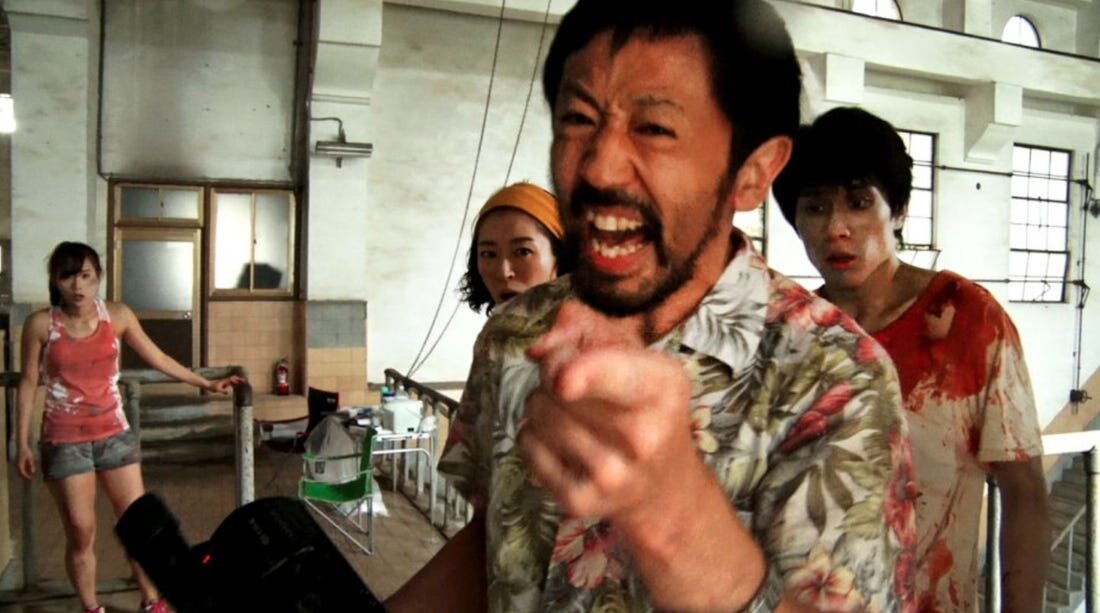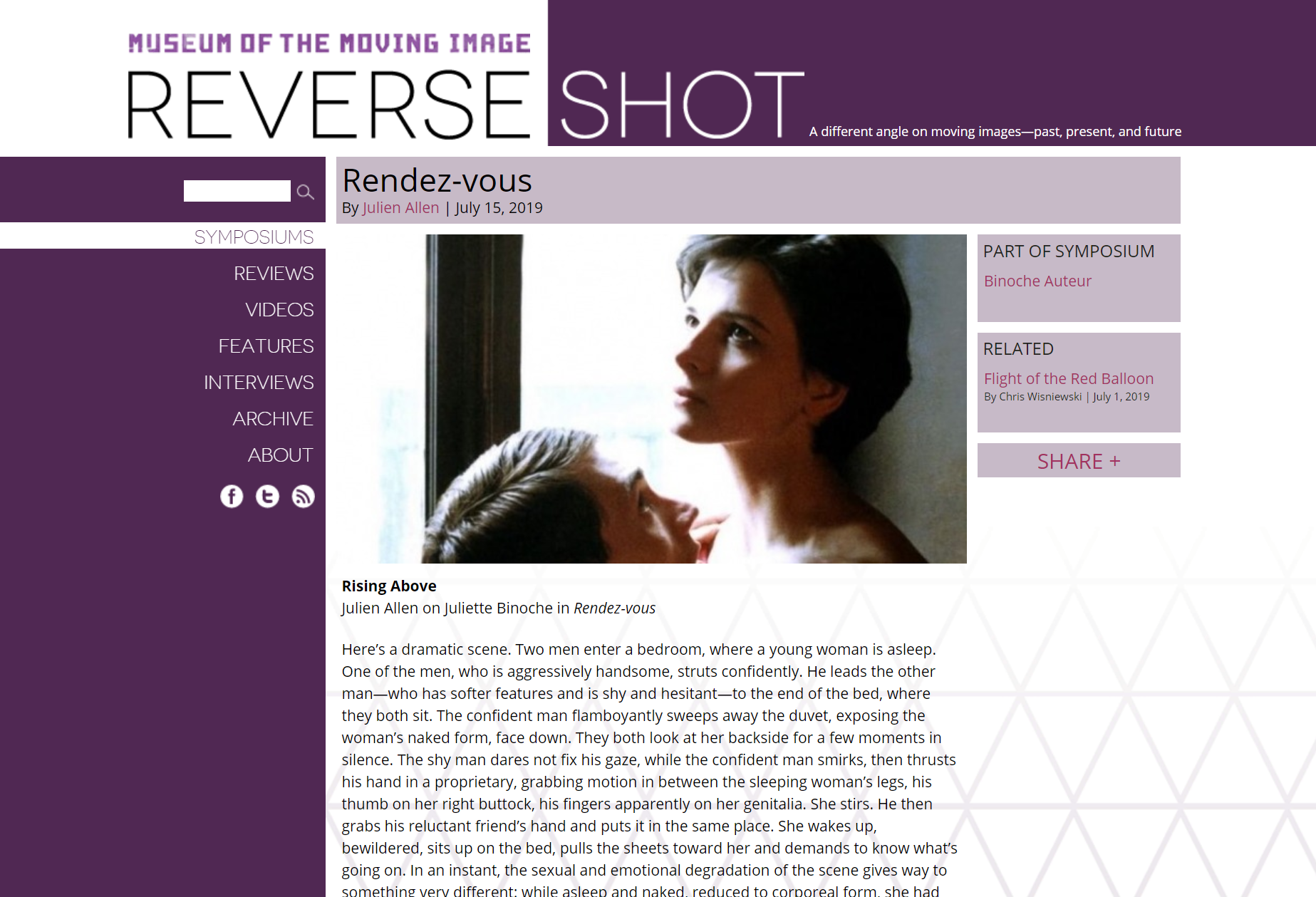Jeff Reichert and Farihah Zaman put together a film using contributions from the participants in this symposium, held before lockdown in the main theatre of the Museum of the Moving Image. It’s called “Critical Interventions” and examines in a multi-mediatic way the reasons one is moved to write criticism.
I was thrilled to be invited onto Reverse Shot’s Happy Hour to discuss my favourite two subjects: Orson Welles being libelled again and that most discredited genre - biopics. Great to share an hour with special friends and collaborators Michael Koresky, Farihah Zaman, Jeff Reichert, Aliza Ma and Eric Hynes.
“Like a bookkeeper filling an addict’s account with free bets just as the addict is ready to go cold turkey, Scratch introduces the enchantress Belle as Jabez’s housemaid (the French actress Simone Simon, who would catch fire the following year in Jacques Tourneur’s Cat People), while a simple handshake—call it a free rider—extinguishes Jabez’s nagging conscience. He spends the rest of the time rubbing his affair with Belle in his wife’s face, while poor Mary tends to the upbringing of their troubled, nascent Donald Trump Jr. of a son.”
Read the entire piece here. Happy Halloween! (And please vote).
I was thrilled to be asked to translate a section of the new film from Jeff Reichert, Damon Smith and Eric Hynes: ROOM H.264: QUARANTINE, APRIL 2020. The film can be watched here.
NOFINOFY (Michael Adrianaly, 2020, Madagascar)
I wrote about Jean-Marie Straub’s uniquely powerful concert film THE CHRONICLE OF ANNA MAGDALENA BACH for Reverse Shot’s Connected feature. RS legend, Toronto-based film teacher and writer Adam Nayman wrote about Documentary Now!’s ORIGINAL CAST ALBUM: CO-OP
It’s always enormous fun to team up with Adam Nayman. Our Lego Movie discussion from 2014 can be found here.
I was privileged to spend the day with some of the finest young film writers, discussing - in an active and multi-mediatic way - the reasons why we write film criticism.
This event was programmed by Head Curator Eric Hynes and animated by the Reverse Shot editorial team of Jeff Reichert and Michael Koresky with the help of Jeff’s filmmaking collaborator and Reverse Shot contributor, Farihah Zaman.
As print magazines become fewer and further between, the cream rises to the top and Film Comment magazine is a centre of excellence. It’s a huge honour to be asked to write for them and in the latest edition I contributed to their Finest Hour series, writing about Isabelle Huppert in Maurice Pialat’s LOULOU (1980)
I provided commentary on two lovely films of 2019 for Reverse Shot’s annual round up of things we missed (2019 - Two Cents): Greta Gerwig’s terrific adaptation of Little Women and the ‘best film of 2019’, Shin'ichirô Ueda’s One Cut of the Dead.
“Best Aging Effects: Little Women
Both Eliza Scanlen and Timothée Chalamet were cast for their resemblance to young girls; Amy (Florence Pugh) is transformed from a hormonal free spirit to a poised woman of the world purely through immaculate physical performance; the extended use of close-ups on the later period Jo (Saoirse Ronan) emphasizes Yorick Le Saux's deft lighting nuances; and if you think you spotted a touch of grey in luminescent matriarch Laura Dern's hair, I put it to you that this is pure projection. The poster tagline for The Irishman was “Time Changes Nothing.” Well...yes and no.”
“Best Film of 2019 (in 20 years time): One Cut of the Dead
This zero-budget guerrilla zombie comedy from Japan's Shin'ichirô Ueda is actually not a zero-budget guerrilla zombie comedy at all. Ueda credits his audience with supreme cinematic sophistication and then predicts our every reaction in advance: he hacks the fourth wall to pieces, builds a fifth, and incinerates that too. Disgusting, hilarious, bewildering, terrifying, and beyond poignant, it combines elements of Marker, Antonioni, and Chaplin without having been obviously influenced by any of them. And it’s a stone-cold, unequivocal masterpiece. But you don't know this yet. You will know this in twenty years time when we've all finally managed to get our heads around it. I just hoped I could be the one who told you this first.”
It was a pleasure to translate some Abel Gance materials for Alex Heller-Nicholas, a noted Melbourne-based film critic and horror expert.
Romane and I were guests of Jeff Reichert (producer of the Netflix film AMERICAN FACTORY, which was nominated for both the BAFTA and Academy Award for Best Documentary). We had a swell time, especially Romane who strode up to the likes of Adam Driver and Rian Johnson and spoke to them.
“Kiarostami is not an angry filmmaker; he is not even a very emotional one (he once told a French journalist he had never once cried in the cinema). He is, like Takashi, serene. He would not conceive of using his work as a form of activism. The irony of his ostracization by the authorities in his home country of Iran—an irony so profound that it would be amusing if the circumstances were not so deplorable—is that neither he nor his films ever attacked the Iranian government, its ideology, nor the enforced lifestyle of its inhabitants. In an echo of (fellow painter) Eisenstein’s artistic dilemma, Kiarostami’s austere, limpid life stories were banned because they were so artfully and subtly presented, and by trusting the audience’s imagination they left so much unexplained, that the authorities did not understand them. So, they reasoned, they must be subversive.”
I was thrilled to contribute this essay on one of the most luminous films of the 2010s. Number 18 on Reverse Shot’s ‘Best of the Decade’ poll: LIKE SOMEONE IN LOVE.
“Booth (Brad Pitt), the calmest powder keg you'll ever see, is the film's heart of darkness. He bears witness from his vantage point on Rick’s roof, then at Spahn Ranch he participates, becoming Hans Landa (as Samuel L. Jackson did in Django Unchained). And the dream will start to turn sour. More than a love letter, it's a eulogy: Tarantino joins Minnelli, Wilder, and Kazan in enriching the ambiguity of the Hollywood myth. If you think the old Cinema, the type we could all soon be lamenting, still has a purpose and value—to excite, provoke, transport, disturb, and enthrall—then don’t despair: it’s all here.”
A momentous year for the movies and sneaking in at number 10, a masterpiece from Quentin Tarantino. You can read my capsule on the film here.
“The outwardly glamorous trappings hinted at in the film’s publicity materials are occasionally apparent—a pivotal sequence at the Ritz-Carlton; Carol’s fur coat and lipstick; martinis for lunch—but they are etched against the soiled, grainy texture of Lachman’s urban landscape. These images and the disarming skill of the lead performances are all of a piece with Haynes’s meticulousness. Despite Haynes’s embracing the sobriety of Nagy’s script, his predilection for iconography (see I’m Not There and Velvet Goldmine) hasn’t fully deserted him: Blanchett looks like pre-Cassavetes Gena Rowlands, while Mara bears an almost insolent resemblance to Audrey Hepburn in Sabrina. Haynes is unafraid to wear his own artistic inspirations on his sleeve and he encourages his collaborators to buy into them: he ingested and recommended to the cast Roland Barthes’s compendium Fragments of a Lover’s Discourse before shooting, and even produced a bespoke playlist of period music (Ella Fitzgerald, Johnnie Ray, Benny Goodman) for his actors to listen to while developing their characters.”
Click here to read my piece on Todd Haynes’ CAROL for Metrograph cinema on the occasion of its 2019 Christmas run.
I was delighted to sponsor Kennington Bioscope’s screening of E A Dupont’s 1928 silent masteriece, MOULIN ROUGE at The Cinema Museum in Kennington on Wednesday 11 December.
“Anton Walbrook is captivating in his unbridled performance style and his total espousal of an old-school, self-destructive and tragic protagonist. But there is something more, too. Walbrook was one of those great film actors who made full and courageous use in his work of his essential otherness (he was an Austrian Jewish homosexual working in a foreign country and language). Although a classically trained actor, in nearly all his memorable English-language performances—but most notably Gaslight (1940)—he drew explicitly on his alien heritage (most obviously represented by his Germanic baritone voice and clipped diction) while in The Queen of Spades he appears to invite the audience to side against him for subconscious reasons other than what he says and what he does.”
Anton Walbrook and Edith Evans are magnificent in this lavish, hallucinatory film. You can read my treatment of it as part of Reverse Shot’s annual Halloween round-up, the Great Pumpkins - here
I was thrilled to guest curate a weekend of films at the Museum of the Moving Image in Queens, NY, celebrating the popular cinema of French-Armenian director Henri Verneuil. Stunts by Jean-Paul Belmondo, dialogues by Michel Audiard, music by Ennio Morricone and Georges Delerue. Fun in the sun!
Many thanks to the excellent Eric Hynes, Curator of Film at MOMI, for this amazing opportunity.
“An apparent ingénue and flibbertigibbet, she is flighty, reckless, preyed upon, and vulnerable, but so utterly mesmeric—and, it must be said, manipulative—as to drive all the principal men in the film literally mad. Quentin commits suicide; Paulot and Scrutzler have a long fight in the rain; Paulot’s own descent into madness takes the form of an attempted lurch into machismo, followed by a corrective retreat into childhood pain and fear.”
I wrote about Juliette Binoche’s gobsmacking debut in Andre Techine’s (and Olivier Assayas’s) RENDEZ-VOUS over at Reverse Shot
I enjoyed my transatlantic interview with Violet Lucca for the Film Comment Christmas podcast of 2016 - discussing the origins of ghost stories at Christmas and especially M R James.
You can listen to the podcast here
M R James ( 1862-1936)
I was delighted to take part last April in the Curzon Cinemas podcast on the subject of Robin Campillo’s masterful BPM: Beats per minute. You can listen to the podcast here.



























